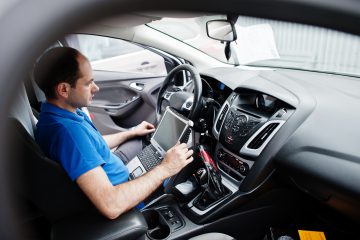Before performing the tips in this article, it would be best if you conduct a starter performance test using an alternator or starter test bench. In doing this, if the starter is not performing well, it is necessary to resolve any additional vehicle side problem in the starting circuit that may have affected the starter. On the other hand, if the starter meets your vehicle manufacturer’s specifications, you should also look up the service manual in order to inspect the car’s starting circuit and to be able to identify the problem and possible solutions. Then, in order to identify the true starting circuit problem, you can use the following troubleshooting questions.
- Does the starter turn the engine too slowly? If so, verify the battery charge, battery cables, ignition timing, engine oil and engine modifications. You should check if the battery is fully charged, and if the battery cables and terminals are in good condition. If the engine has been modified and has increased compression ratio, these could influence the starter’s inability to turn the engine. Note that improper engine timing, if it is more advanced, or if the engine oil is excessively viscous, these are also factors affecting the starter’s performance.
- Does the starter fail to crank the engine? If the answer is yes, you must check the battery, the battery cables and the terminals. Make sure that both the ends of the battery cables are inspected for proper connection and are kept clean.
- Does the starter try to turn the engine, but then just spins free? When this happens, check the flywheel ring gear or the flex plate, and inspect if there is excessive wear and missing or damaged teeth. Similar symptoms would be found in failed starter drives. Then, the flywheel teeth can be inspected through the starter access or mounting opening. In order to find excessive wear, check areas such as the four cylinder engines, two positions, 180 degrees apart, six cylinder engines, two positions, 120 degrees apart and eight cylinder engines four positions, 90 degrees apart.
- Does the starter click when trying to start the engine? Supporting questions to this are, has the ground circuit between the battery and the engine been checked for high resistance? Or have the battery cables and terminals been inspected for damage, wear, corrosion and loose connections? If the solenoid or relay clicks and your starter fail to turn, your problem could be a loose connection, or some damage in the wires. Then, you should check the battery cables’ voltage drop to ensure that the resistance is high enough to meet the vehicle manufacturer’s recommendation.
- Is there a clattering sound when trying to start the engine? If you hear such noise, one possible cause is a bad flywheel or ring gear. Another possibility could be an inoperable starter solenoid or low battery voltage. Make sure that your battery is fully charged, and all the battery cables and terminals remain in good condition.
Finally, keep in mind that these tips are mainly general information for troubleshooting your starter and vehicle starting circuit. While these tips might be helpful, they are best used along with the service manual that contains the proper specifications.
If you would like to purchase high quality car components to help your home troubleshooting, check out autopartsway.com. We offer a wide variety of parts with the best discounts online.


